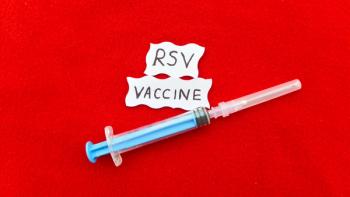
Navigating the Long, Bumpy Road to Rare Disease Diagnosis and Treatment
A patient details his experience juggling the roles of caregiver of his wife with cancer and patient struggling to receive a diagnosis for a rare disease.
It’s been 10 years since the FDA approved siltuximab (Sylvant; Recordati) the first and only treatment for idiopathic multicentric Castleman’s disease (iMCD), a rare immune disorder. But I’ve been taking this drug since 2006, when it was in early clinical trials, after I endured a long and harrowing road to diagnosis. I want to share my story with others so they can better understand iMCD, the importance of an accurate diagnosis, and the power of self-advocacy.
My story started in high school, where I met my future wife. We had a blessed life together, with children, grandchildren, and an active lifestyle. I built a successful career and in my spare time I was an active sportsman.
After 20 years of marriage, my beloved wife was diagnosed with an aggressive type of cancer. While caring for her, I started to develop strange symptoms of my own. I had trouble breathing, and often felt I couldn’t get enough air into my lungs. My wife was concerned and we had to take turns taking care of each other, which was not ideal.
I went to my primary care physician, who ordered extensive bloodwork and a stress test, among other exams. She saw something potentially alarming on the stress test and sent me for a chest X-ray, which revealed 14 nodules. A pulmonary expert then did a nodule biopsy and confirmed that what I had was not cancer. This was good news, but it did not explain my worsening symptoms. My physicians thought, but weren’t sure, that perhaps I had sarcoidosis, and took a watch-and-wait approach.
My symptoms worsened significantly after my wife passed away, following a 4-year cancer battle. After holding on for all the time I cared for my wife, my body seemed to go haywire once she passed. I experienced extreme night sweats and fatigue. One morning, I woke up with swollen lymph nodes. I was able to get a biopsy that same day, and finally ended up with the diagnosis of iMCD. However, at the same time, the doctor said that I was also likely HIV-positive, suspecting that my wife may have contracted HIV during one of her 68 blood transfusions. I was baffled, but I turned out not to be HIV-positive after all.
None of my local doctors was familiar with iMCD. After researching the disease online, they told me that I needed to start chemotherapy, similar to my wife’s treatments, and that I would likely live only another 2 years. They also wanted to do a bone marrow biopsy. Why a bone marrow biopsy? It didn’t make sense.
Frustrated by years of trial and error, I finally took matters into my own hands. Over the 4 years of supporting my wife through her cancer, I learned a lot about the power of self-advocacy during the course of her treatment, so I decided to do the same for myself.
The internet wasn’t quite what it was in 2006 as it is today, but it was good enough for me to research and find a renowned iMCD expert at the University of Arkansas. I made an appointment, flew down to Arkansas from Ohio, and had a stroke of good luck: I learned I was eligible for an iMCD clinical trial. Once I started the trial, my health drastically improved, but to receive my treatment I had to take the approximately 700-mile trip 193 times, some by plane but mostly by car. Today, that same treatment is available in my area, so I only need to drive 45 minutes to get infused.
iMCD is the most prevalent subtype of Castleman disease, which is a group of 3 immune system disorders that have different symptoms, causes, and treatments. It is a complicated, often life-threatening disease. Further, iMCD is hard to diagnose, as its symptoms, such as enlargement of multiple lymph nodes, flu-like symptoms, fluid accumulation, and enlarged liver or spleen, mimic other conditions.
Those of us with iMCD are part of a small community of approximately 1600 people in the United States. However, since the symptoms overlap with so many other diseases, it is likely underdiagnosed. In addition, symptoms manifest themselves differently in each person. As with many other rare diseases, it can take many years to obtain a proper diagnosis.
I would love to see greater collaboration between different medical specialists in tackling difficult diagnoses, so lesser-known diseases like iMCD become easier to detect. Unlike many rare diseases, iMCD has an FDA-approved therapy that works well for many patients. Meanwhile, the Castleman Disease Collaborative Network is accelerating research toward a possible cure.
I consider myself extremely fortunate, not only to have found a therapy that helps me manage my disease, but also to have found love once more and remarry after losing my first wife to cancer. However, my second wife has been diagnosed with triple-negative breast cancer. Nevertheless, my dual experiences as caregiver and patient have helped us tackle her diagnosis and treatment plan together, head on, and with much success. In that way, my wife and I hope to inspire others who are on the path to diagnosis and treatment, no matter how rare the disease.
Newsletter
Stay informed on drug updates, treatment guidelines, and pharmacy practice trends—subscribe to Pharmacy Times for weekly clinical insights.




















































































































































































































